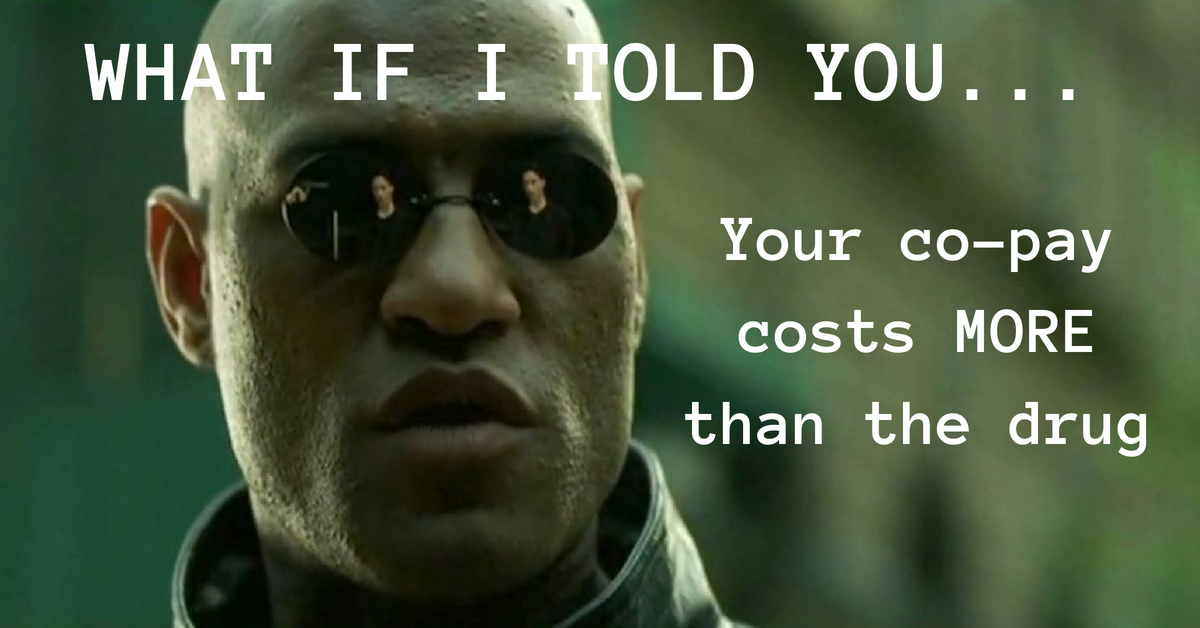By Doly Han, MPP & MBA Candidate, 2019
Summer Intern, Lown Institute & Right Care Alliance
I have been dealing with seasonal allergies for many years. Every spring, when the pollen comes, I have to go to a clinic, get a prescription, go to a pharmacy, and get a nasal spray. When I went to my local CVS a month ago, the pharmacist said the prescribed brand name nasal spray was $16. This seems high to me for a tiny bottle of nasal spray about as big as a bottle of eyedrops.
As a poor graduate student, I am used to scrounging for deals to save some pennies. I asked the pharmacist if there was a cheaper option and he told me I could buy a generic version without my insurance for $13.45. How was buying a drug without insurance cheaper when I pay so much for my student insurance premium? I asked the pharmacist, “Is it because of the PBM?” He saw my eyes and didn’t say a word, but he nodded his head yes.
The pharmacist seemed surprised that I knew what a PBM was, since not many Americans know. But I have seen the light and now, I am ready to share the secret with you…
What the heck is a PBM?
PBM stands for Pharmacy Benefit Manager. These companies are third party administrators hired by insurance companies that negotiate drug prices with drug manufacturers, ostensibly to get a better deal for the people covered under that insurance. There are three main PBM companies, CVS Caremark, OptumRx, and Express Scripts which make up about 70% of the market.
With drug costs being as high as they are, it makes sense that you would want someone negotiating prices down, to lower costs for insurers and patients. But unfortunately, it doesn’t work that way in practice. Here’s why:
Lack of transparency
Although PBMs are meant to negotiate better drug prices for patients, there’s very little transparency to show how much PBMs are helping patients and how much they’re taking in profits. PBMs create formularies – the list of drugs covered by insurance plans – and drug makers give PBMs a large rebate so they can get on the formulary. But there’s no law that says that PBMs must pass rebates on to health plan members, and often, they just pocket most of the difference.
PBMs use the formulary to favor drug companies that give the biggest discount, and often protect brand name drugs from generic competition. For example, several drugs for ADHD and painkillers many people need are protected from competing against generic drugs because they are part of this formulary created by the PBM. This ultimately creates higher health care spending because patients are essentially forced to buy brand name drugs that are covered instead of cheaper generics that aren’t on the formulary.
Claw-backs for co-pays
Clawbacks are one of many secrets of PBMs. Like a bear snatches a salmon from the river, PBMs snatch cash from my hand. When you buy a drug at a pharmacy, you are likely to be asked to pay a co-pay, which is set by the PBM. It’s assumed that the co-pay is to cover part of the cost of the drug, but sometimes PBMs set a co-pay higher than the actual cost of the drug, and then takes the overpayment as profit.
For instance, let’s say you pay a co-pay of $15 for a drug you need. This co-pay of $15 was actually decided by the PBM while the cost of this medicine is only $2. Out of this $15 co-pay, the pharmacist will get a reimbursement of $7, and the profit will be $5 for them after subtracting the $2 cost of the medicine. And the remaining $8 goes right to the PBM.
The pharmacy gag rule
Sometimes, the patients who need medicine can pay much less if they purchase medicine in cash without insurance. But at the same, many pharmacy benefit mangers make contracts with the pharmacies that forbid pharmacists from telling patients when the price of drug is cheaper in cash. Only if we ask them are pharmacists allowed to tell patients when it is cheaper to buy drugs in cash, like I did for my allergy medicine.
There is lawsuit case which shows how PBM may put their benefit first before patients. In this allegation, a patient was charged for $165.68 for a generic drug that would have been only $92 if the drug was purchased in cash without insurance. The argument shows that contract made between pharmacy and PBM doesn’t allow pharmacist to inform their patients of a cheaper option. Why not? So PBMs can make a higher profit out of pricey medicine. They’re essentially holding pharmacies hostage because if they violate the contract, the pharmacy would be expelled from the PBM network.
Conclusion
How can we solve this issue in which PBMs make massive profits out of patients’ pockets? Many patients are financially struggling just to afford medications, and the additional mark-ups from PBMs can make it worse.
We need to reevaluate the current drug pricing system and make it transparent how much these drugs actually cost to manufacture and where the excess profit is going. We need an appropriate regulation regarding to decision making system of drugs. It simply does not make sense when the price of generic can be higher than the price of brand name drugs.
Second, patients should not have to pay a co-pay if the price of drugs can be covered through insurance. And pharmacists should not be prevented from telling their patients of cheaper option available. Ultimately, patients who need medications should not be used as a tool for PBMs to make more profit. Because this is not an issue of supply and demand; it is an issue of right and wrong.

